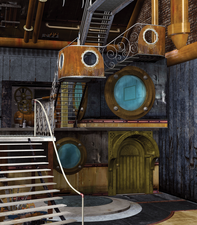Design printed circuit boards with KiCad
Boardwalk

© Lead Image © Shamain, 123RF.com
KiCad helps you design printed circuit boards with up to 32 layers, checks for optimal placement, and supplies schematics and assembly diagrams in the popular Gerber format for submission to PCB manufacturers.
KiCad was originally launched as simple schematics software; today, it supplies blueprints for components used at the CERN nuclear research center in Geneva, Switzerland. Accordingly, CERN's scientists are actively involved in the development of KiCad, which is available for Linux, FreeBSD, Mac OS, and Windows [1].
Schematics created with this program are suitable for importing into other programs, depending on the format. KiCad comes with numerous features and, unlike the free versions of commercial counterparts such as Eagle Light Edition or Target 3001!, there are no restrictions on its use and scope. See the "Basics" boxout if you are a newcomer to the field.
The program is available for many distributions. You can download the latest version from the project page, where you also will find the source code if you want to compile the software yourself.
[...]
Buy this article as PDF
(incl. VAT)
Buy Linux Magazine
Subscribe to our Linux Newsletters
Find Linux and Open Source Jobs
Subscribe to our ADMIN Newsletters
Support Our Work
Linux Magazine content is made possible with support from readers like you. Please consider contributing when you’ve found an article to be beneficial.

News
-
Parrot OS Switches to KDE Plasma Desktop
Yet another distro is making the move to the KDE Plasma desktop.
-
TUXEDO Announces Gemini 17
TUXEDO Computers has released the fourth generation of its Gemini laptop with plenty of updates.
-
Two New Distros Adopt Enlightenment
MX Moksha and AV Linux 25 join ranks with Bodhi Linux and embrace the Enlightenment desktop.
-
Solus Linux 4.8 Removes Python 2
Solus Linux 4.8 has been released with the latest Linux kernel, updated desktops, and a key removal.
-
Zorin OS 18 Hits over a Million Downloads
If you doubt Linux isn't gaining popularity, you only have to look at Zorin OS's download numbers.
-
TUXEDO Computers Scraps Snapdragon X1E-Based Laptop
Due to issues with a Snapdragon CPU, TUXEDO Computers has cancelled its plans to release a laptop based on this elite hardware.
-
Debian Unleashes Debian Libre Live
Debian Libre Live keeps your machine free of proprietary software.
-
Valve Announces Pending Release of Steam Machine
Shout it to the heavens: Steam Machine, powered by Linux, is set to arrive in 2026.
-
Happy Birthday, ADMIN Magazine!
ADMIN is celebrating its 15th anniversary with issue #90.
-
Another Linux Malware Discovered
Russian hackers use Hyper-V to hide malware within Linux virtual machines.

